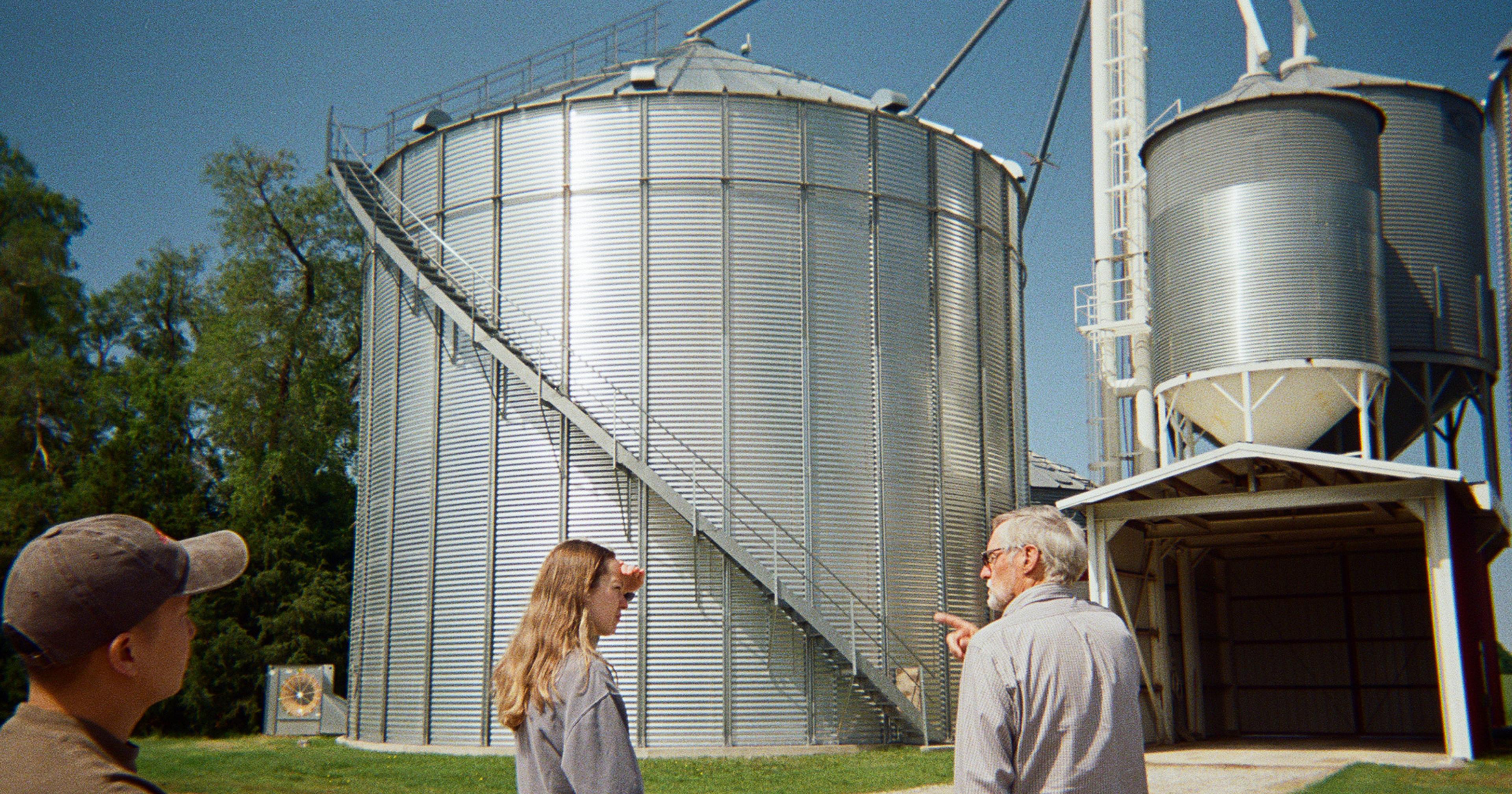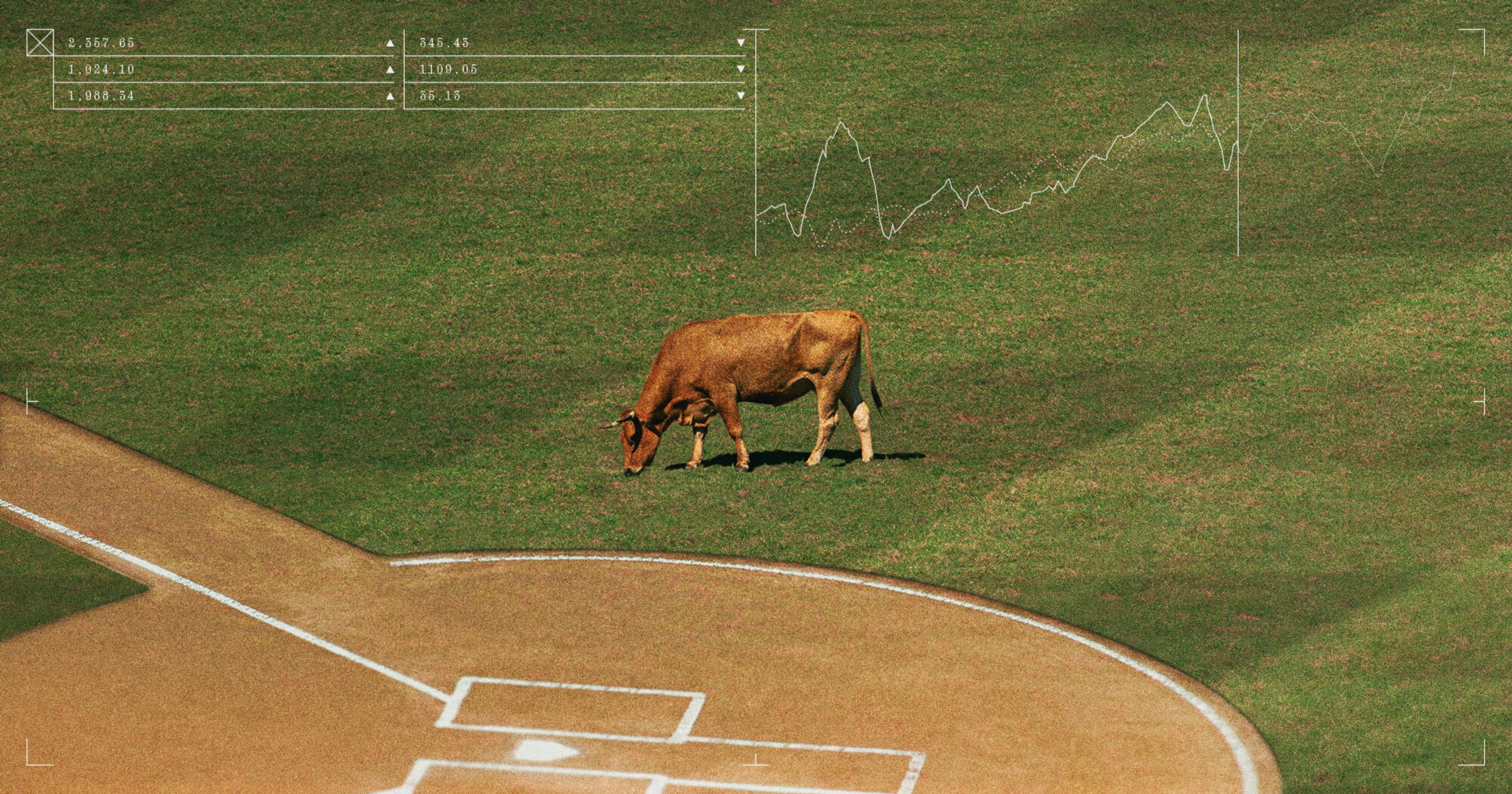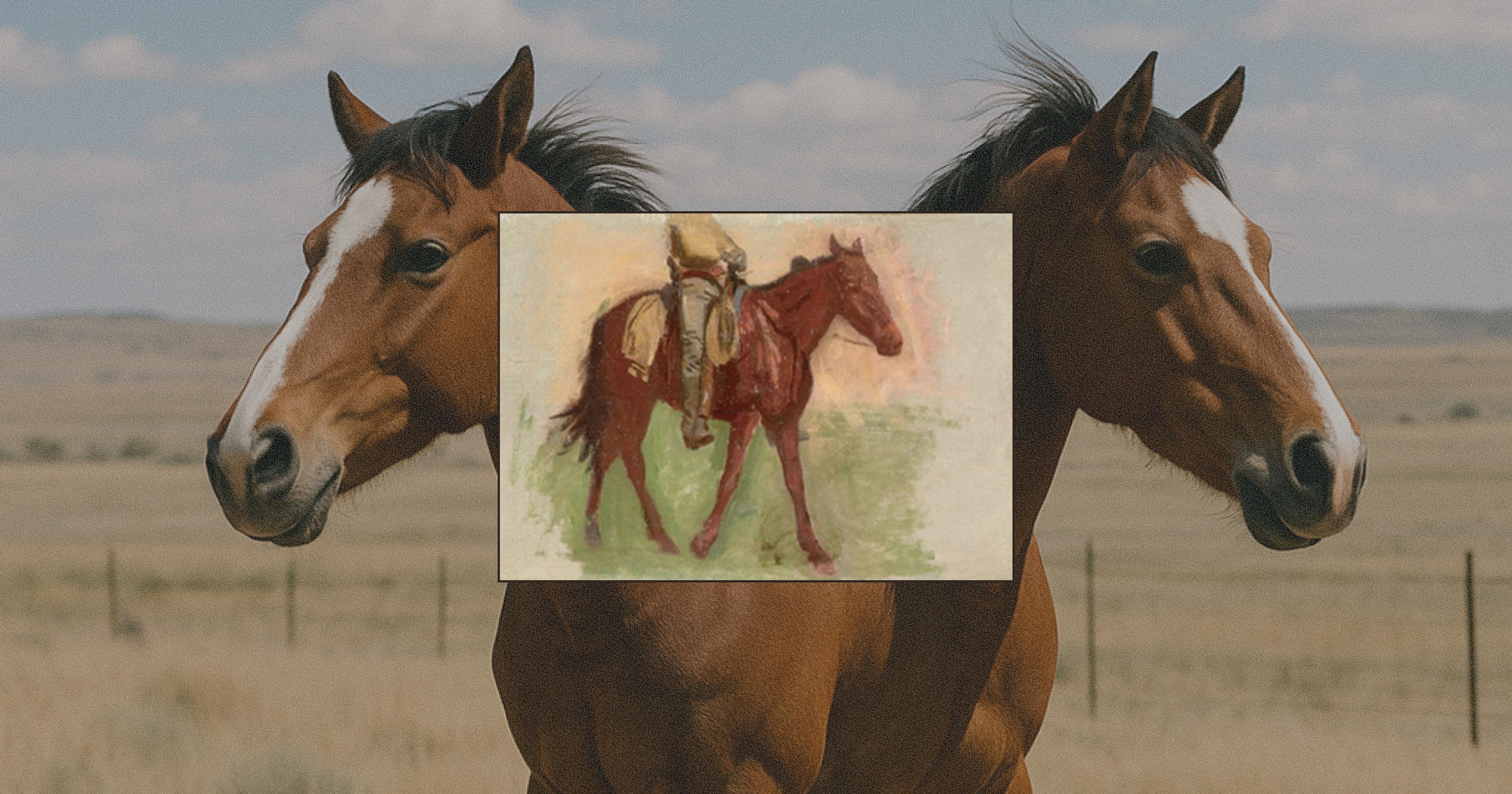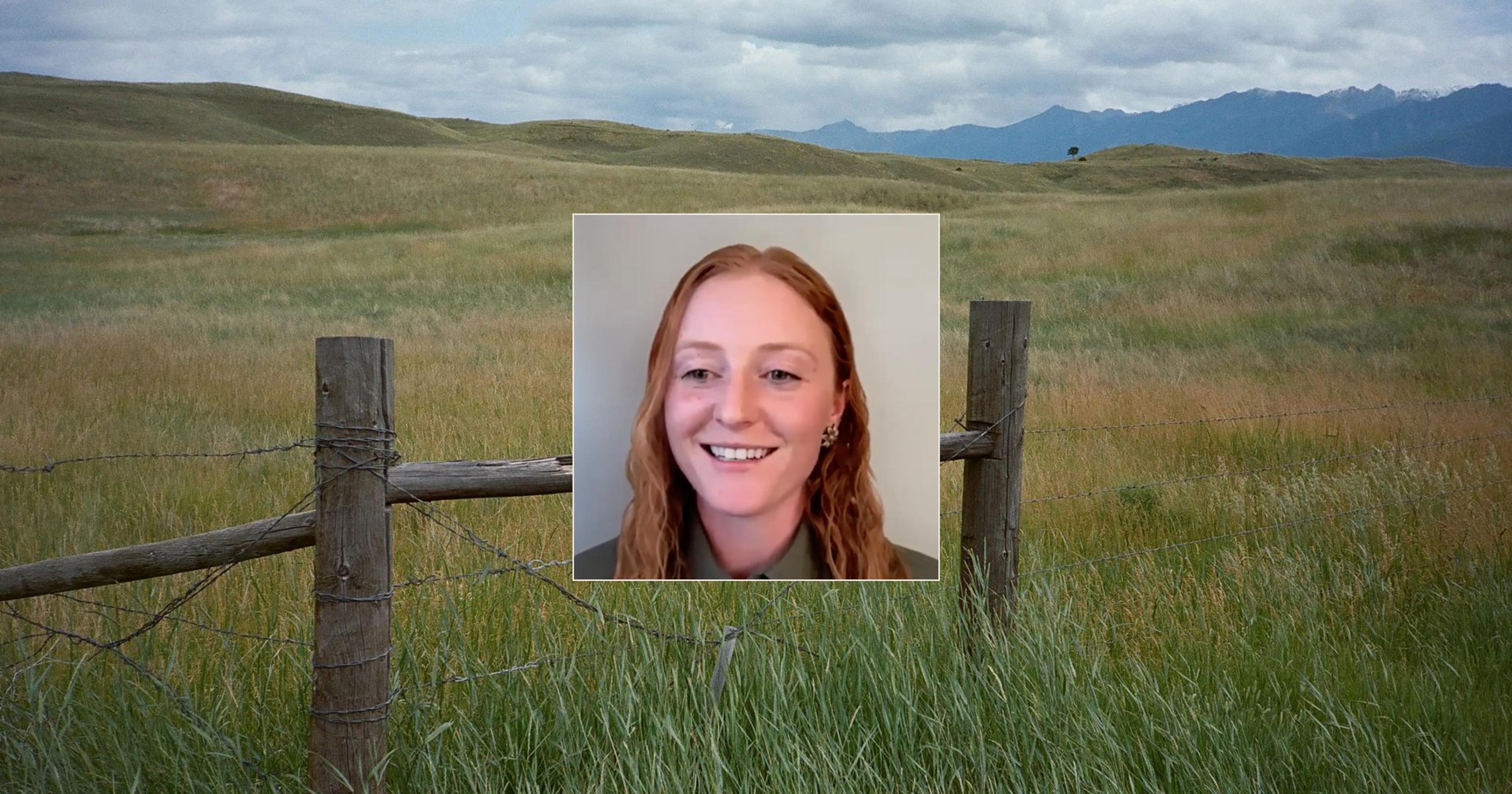I’ve always been more interested in the application of software than software itself. I feel real excitement when I can map my code to a meaningful real-world contribution, whether that’s responding to a small piece of user feedback or tackling a larger-than-yourself mission like the climate crisis.
As someone with no prior experience in agriculture, Ambrook’s specific approach to climate caught my eye because it was bold; it states there can be positive-sum scenarios, where profitability on farms is linked to resilient and nutrient-rich land. Determined to contribute, I joined and have since been able to work on projects directly related to this mission.
Listening and Learning
Last year, I traveled to North Carolina with a small group to visit the Sustainable Ag Summit, where producers expressed a genuine desire to build resilient food systems — but still need the math to pencil out. I also visited and learned from our customer Bread & Butter Farm in Vermont, as they expressed a need for managerial accounting in order to secure an agroforestry grant. And most recently, I traveled to Kansas with my team to meet with another customer, Silver Creek Farm; we dove into their involvement in the CarbonNow program, where they help producers receive funding for implementing practices that sequester carbon.
From our farm visits and the many talks at the Sustainable Ag Summit, we heard one thing over and over again: Profitability is the core driver in any business decision, including regenerative and other conservation practices.
Something that has really struck me in listening to our customers is how much farmers, ranchers, and other agribusiness owners want to steward their land well. The main hurdle is that they need to trust that these decisions are financially sound — changing practices is a risk that many can’t literally bet the farm on — and there is a gap in the industry for reliable, easy-to-use tools that connect conservation practices to a farmer’s bottom line.
Bread & Butter needed assurance they could maintain profitability while adopting agroforestry practices that reduce greenhouse gases and soil erosion. Silver Creek Farm saw the CarbonNow program as an opportunity to expand their operation and increase profitability by promoting biological agents which sequester carbon.
I was really proud to work on two products that exemplify Ambrook’s commitment to bridging this gap — smart tags and receipts.
Smart Tags and Metrics
Profitability insights have always been offered at Ambrook in the form of multidimensional tagging: Tag your transactions once across different tag types (e.g., the Schedule F “Supplies” Category and the “Apples” enterprise) and receive a profit-loss statement that can be used to file taxes or view a dashboard that describes how your enterprise is performing.
From our visits with both farms, we learned where tags came up short:
There were missing tag types: There was no way to model a location or a conservation project.
Tags did not offer a solution to simple managerial accounting.
Conservation grant income is distributed to Brandon Bless at Bread & Butter per acre and if he cannot track costs by this measurement he can’t know if a practice is profitable.
Allen & Paul Schrag at Silver Creek farm need profitability by field in order to make land purchase decisions and know which combinations of seed, inputs, and practices are most profitable.
But after a couple months of user experience research, product requirement drafting, and engineering, we were able to ship smart tags, introducing metrics and more tag types!
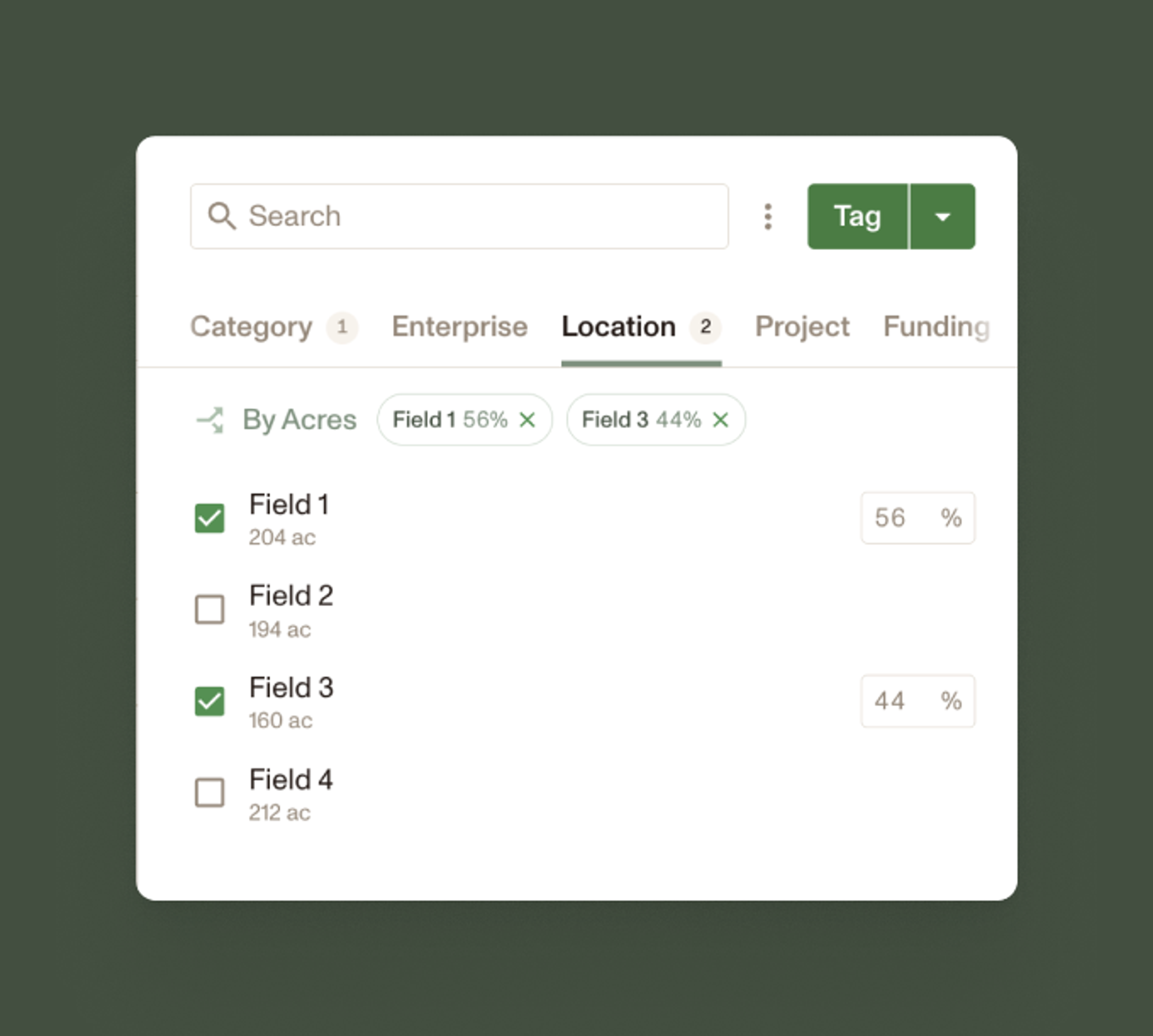
Get the data in: Defining metrics and splitting transactions by location tags.
Now, the Schrags can tag by location in addition to enterprises, projects, and funding programs. On their location tags, they can record metrics to assist with splitting field input costs by acre while they tag. For example, a $1000 fertilizer input cost used across 3 fields (50, 100, and 150 acres) would be automatically split (16.7%, 33.33%, 40%).
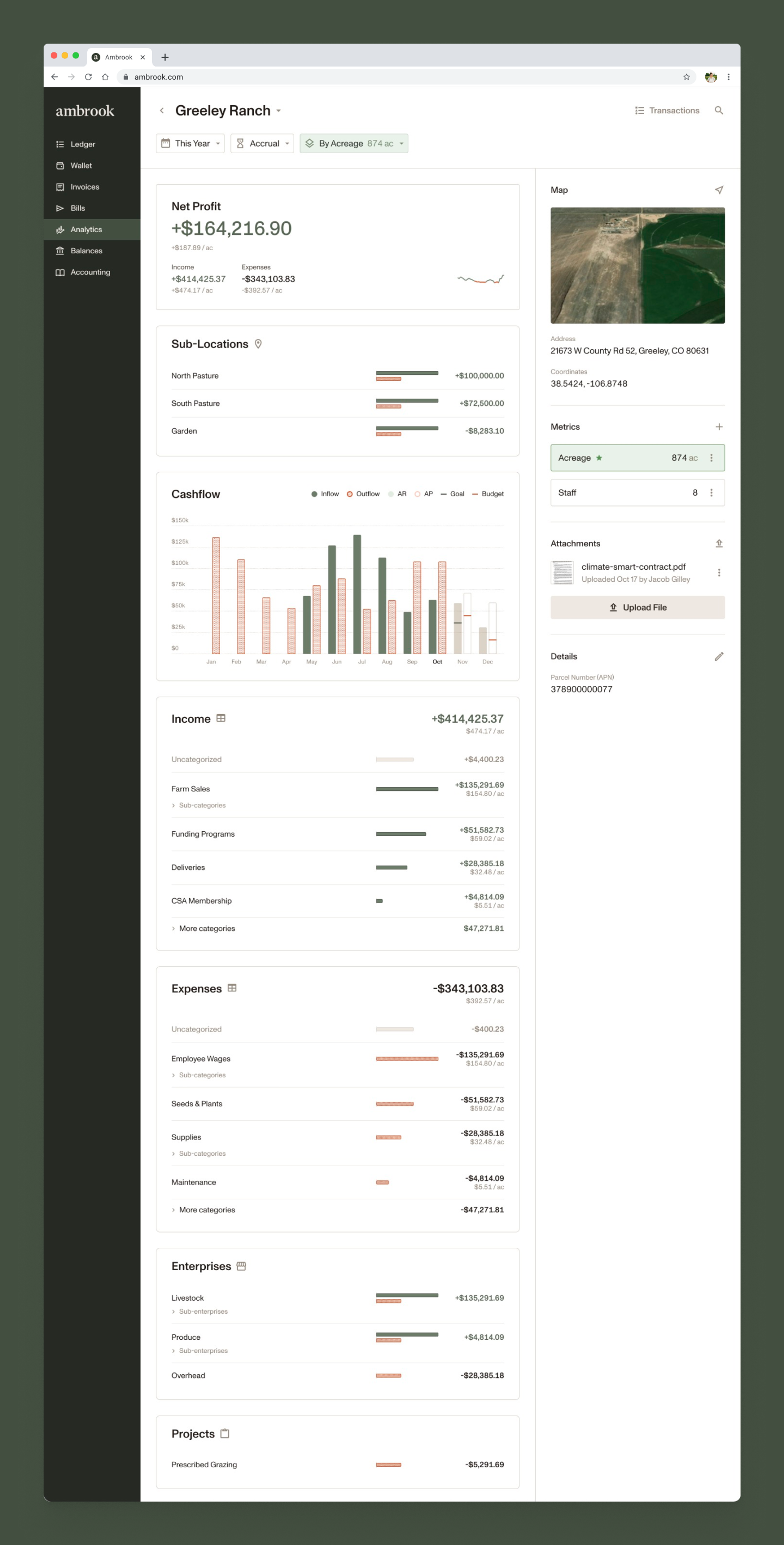
Get the data out: View field profitability by acre.
These splits roll up to our dashboards and reporting features so the Schrags can view field-level profitability, as a whole, or per-acre, at the click of a button, rather than spending hours wrangling data in spreadsheets to try to get those numbers.
Both Silver Creek Farm and Bread & Butter can perform similar analyses across many other tag types and generate per location or per enterprise profit-loss statements!
Receipt Management
Managing conservation grants (compiling paperwork, receipts, and financial data) tends to be a time-consuming activity which limits practice adoption … but not with Ambrook!

Get the data in: Upload receipts as a net new transaction or match.
With our receipts product, users can bulk upload receipts and our system will parse receipt fields with AI, either creating a new transaction or matching the receipt to an existing one. When the time comes for a customer like Brandon to fulfill grant obligations and provide evidence of practice adoption, our filtered attachments export can instantly generate a set of attachments for transactions tagged to a certain practice.
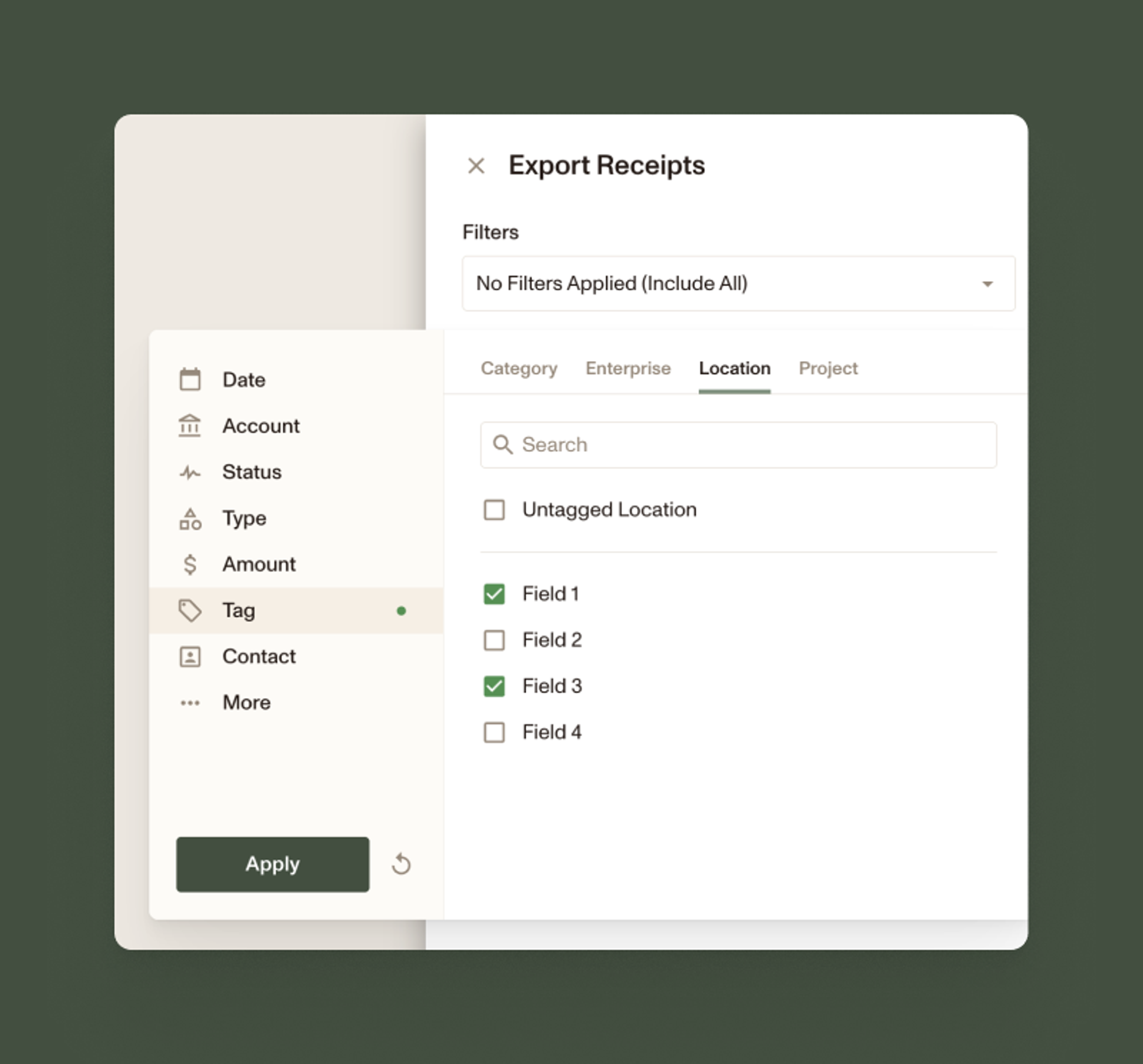
Get the data out: Export all attachments based on transaction tag filters.
By offering real-time profitability insights and improving grant management workflows, these features have seen lots of traction. As of this month, our platform has 190 metrics and over 400 metric quantities across enterprise, funding, project, and location tags. We also have roughly 150,000 attachments — our most dedicated receipt user has uploaded around 10,000!
From my various farm visits and coding sprints, my big takeaway is you can’t improve what you don’t measure and, as Ambrook’s platform continues to enrich the profitability insights we offer to farms and agribusinesses, we will continue to make meaningful progress toward our climate mission.

